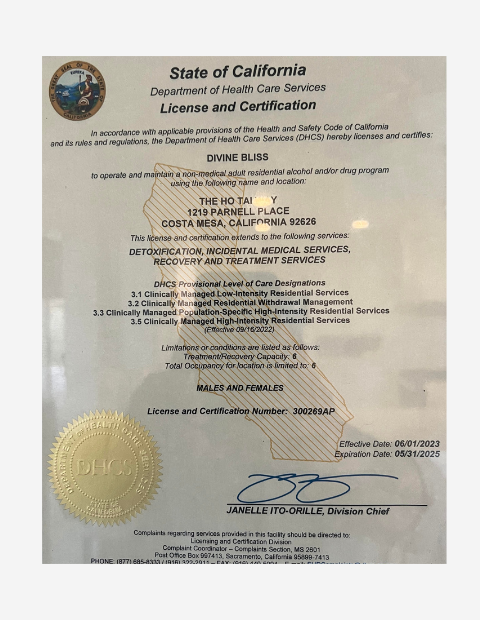Trauma takes its toll on the mind, body, and spirit. Those who have experienced trauma require trauma-informed therapies, or treatment modalities, to ensure safe and effective healing during treatment for addiction. These types of therapies offer healing in a way that does not trigger or reactivate trauma but rather seeks to heal trauma along with addiction or other mental health disorders.
Art therapy is an excellent treatment modality to use with trauma-informed principles to help patients heal through the use of creativity.
What Is Art Therapy and How Can It Help Heal?
According to the American Art Therapy Association, as cited in an article in Frontiers in Psychology in 2018, the full definition of art therapy is:
“Art therapy, facilitated by a professional art therapist, effectively supports personal and relational treatment goals, as well as community concerns. Art therapy is used to improve cognitive and sensorimotor functions, foster self-esteem and self-awareness, cultivate emotional resilience, promote insight, enhance social skills, reduce and resolve conflicts and distress, and advance societal and ecological change.”
In layman’s terms, art therapy is the use of art or creative expression that a licensed therapist facilitates to address emotional issues, process trauma, or otherwise express emotions and memories. The creative process is instrumental in healing because it provides a non-verbal way of communicating and processing deep memories and emotions.
Do I Need to Be an Artist to Benefit From Art Therapy?
The art in art therapy is not the point; it is the therapy. Participants and even therapists do not need to be artists; their projects do not need to be masterpieces or even what some might consider art. The actual creative process of expression is what is healing, meaning what the end result looks like is irrelevant. What you, as the participant, feel is the most important part of art therapy.
Studies about the efficacy of art therapy on mental wellness have overall been very positive, demonstrating more profound and longer-lasting healing. One of the reasons for this is that it provides a nonverbal, alternative means of expression that helps release trauma.
What Makes Art Therapy Trauma-Informed?
Trauma-informed care can refer to any type of care that uses the compassionate approach of healing based on five basic principles of safety, choice, collaboration, trustworthiness, and empowerment.
When art therapy is led by a licensed therapist and incorporates the trauma-informed model, it is trauma-informed art therapy. Some forms of therapy are ideal for healing trauma, and with the nonverbal, creative outlet, art therapy is particularly conducive to the trauma-informed model.
For many who have experienced trauma and cannot verbalize or recall their trauma in traditional therapeutic methods, trauma-informed art therapy can be a powerful way to bring these experiences and emotions to the surface, process them, and find healing through the creative process.
Why Do I Need Trauma-Informed Art Therapy?
Many women have experienced trauma, even as long ago as in their childhood. Trauma can be long-lasting and make it difficult for you to feel safe. Some women may have worked on healing their trauma. For many women, Eye Movement Desensitization and Reprocessing (EMDR) can be a very effective therapeutic tool in the healing of trauma. For a few women, however, EMDR may not be effective for them, or they may not have had access to EMDR.
Trauma that has not been processed, or healed properly, can often be the root cause of substance abuse. When you seek treatment for addiction, you will also need to seek healing for your trauma. This is a perfect opportunity to use trauma-informed art therapy, as it enhances your treatment process and helps you heal from your trauma at the same time.
Can Trauma-Informed Art Therapy Make a Difference in My Treatment?
For women struggling to make a breakthrough in their treatment, trauma-informed art therapy can make all the difference. Through the creativity and expression of art therapy, patients can sometimes accomplish more in less time than they might in traditional forms of talk therapy. Some women even report that art has become a new hobby for them because of the ability to express themselves in such a healing, powerful experience.
Trauma-informed art therapy can sometimes be just what is needed to unlock your treatment experience and help you release and heal from your trauma so you can also heal from your substance use disorder (SUD). This is why using different treatment modalities is essential to create a truly individualized treatment plan for each woman because you never know which modality will be the one that will unlock your personal healing experience.
Trauma-informed art therapy is a beneficial treatment modality used for the healing of trauma and addiction. You do not need to be an artist to take advantage of both the principles of trauma-informed care and art therapy. Trauma-informed art therapy can be particularly beneficial for those with unprocessed trauma and make a difference in your treatment. The Ho Tai Way – Recovery For Women is a detox and residential treatment facility for women. We offer trauma-informed art therapy as well as trauma-informed care to provide a safe, peaceful refuge for healing. Our Costa Mesa, California facility offers you a compassionate, non-judgmental place to find individualized treatment to meet your specific needs. We offer evidence-based and complementary treatment methods to help you find the best way for you to heal. How can we help you get started with trauma-informed art therapy? Contact us at (714) 881-8931 today.









